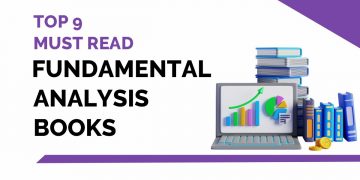Just like in school, we used to have exams to keep a check on our performance.
Similarly, in the corporate world, companies need to come up with their quarterly and annual result so that the owners (shareholders) can keep a track of company’s financial performance.
The financial statements play a very key role in mirroring the performance of the company.
Let’s understand what are financial statements?
Financial statements are formal records about the financial performance of an organization.
In short, it’s a report card which shows how a company has performed in the last quarter/year and whether or not the company has made money.
These statements are useful for a number of reasons: To see company’s financial results over a period of time.
1. To see company’s financial results over a period of time.
2. To check company’s ability to generate cash flows.
3. To find company’s ability to pay off the debt. To compute financial ratios that help in determining company’s financial health.
4. To compute financial ratios that help in determining company’s financial health.
As an investor, you should possess accounting knowledge to better analyze the financial statement of a company and it should be a top priority as an investor.
These financial statements are divided into three sections namely income statement, balance sheet, and cash flow statement.
However income statement gets the most attention since it is here the numbers for revenue, profit and EPS is stated.
To know the step by step analysis of Financial Statements, you can watch the video below:
Let’s understand each of these financial statements in brief:
1. Income statement
It is also known as profit and loss statement and is one of the major financial statements used by the business owners and accountants.
This statement shows company’s revenue and expenses in a given period and is prepared on an accrual basis.
Read More: How to Prepare Income Statement?
To know about the analysis of the financial statements in more details enroll in NSE Academy Certified Equity Research Analysis
2. Balance sheet
It provides a snapshot of a company’s financial condition which gives a basic idea of what the company owns and owes along with the amount invested by the shareholders.
It summarises company’s assets, liabilities and shareholder’s equity at a certain point in time.
The Balance sheet is prepared on the following formula:
Assets = Liabilities + Shareholder’s Equity
3. Cash flow statement
It is a statement which states the source of cash flow for a company and how the cash was utilized over a certain period of time.
It is prepared on a cash basis.
This statement is classified into three parts namely cash flow from operations, investing and financing activities.
Bottomline:
We hope that you got a brief idea of the analysis of the financial statements of a company.
In the upcoming blogs, we will discuss various financial statements in more detail.
Till then, keep reading our blogs and do give your feedbacks and suggestions in the comment section.
Also if you love similar topics, then you can join our equity research analysis course in hindi.
In order to get the latest updates on Financial Markets visit Stockedge









First time to your blog. I always see your Tweets, so I thought I'd check you out. Fantastic that it was a get to know me (you?) vlog. Numbers 1 to 3 I completely agree. Number 4, I am not shy, except when Number 5 comes along. I love giving hugs or bises (aka the French), but my Dad hates huggers with a passion, so I am always afraid I'll freak someone out! Nice to meet you! As my two year old says and have a fantastic time at your coeecrfnen!
BB Administrador o episódio número 13 é o último ?por que vendo ele da até uma sacada pra ver quem é -AValeu amei o epi new adoro o blog
An imaginative apparatuses for best accountancy, budgeting, and accountancy I actually have found for my trade downloadable at https://www.excel-accounting-budget-analysis.com. Since its command for cash connected investigation for business commerce for accountancy to set up remuneration articulation, alter sheet, money take once rationalization and invoicing. Monetary examination budgeting current year and future year will too be completed at need for semi-permanent estimating.